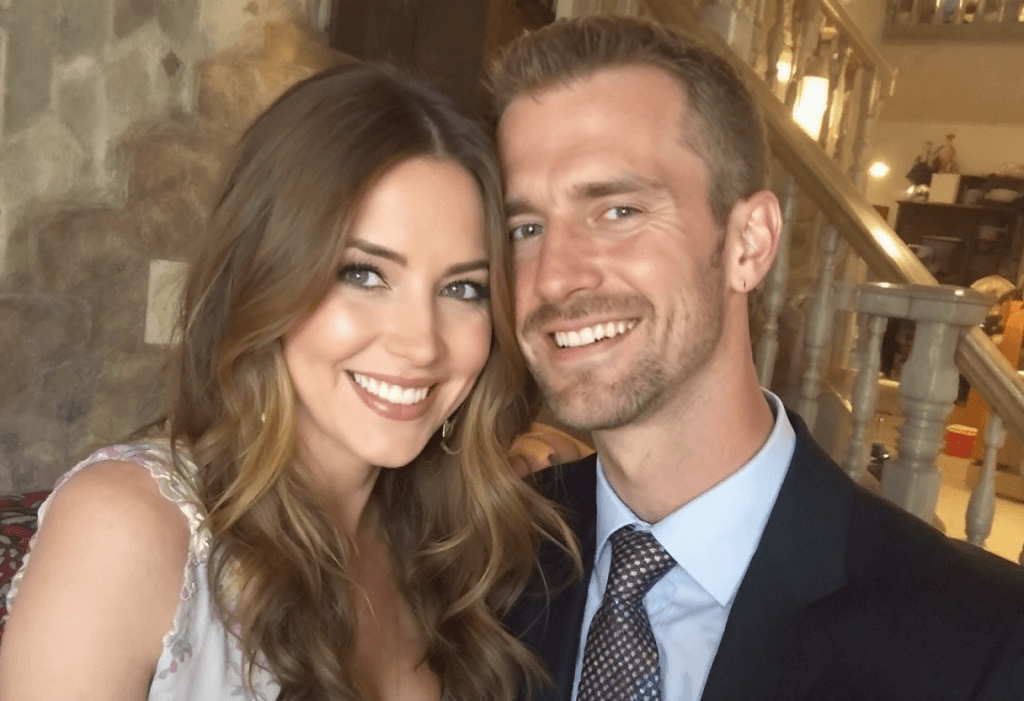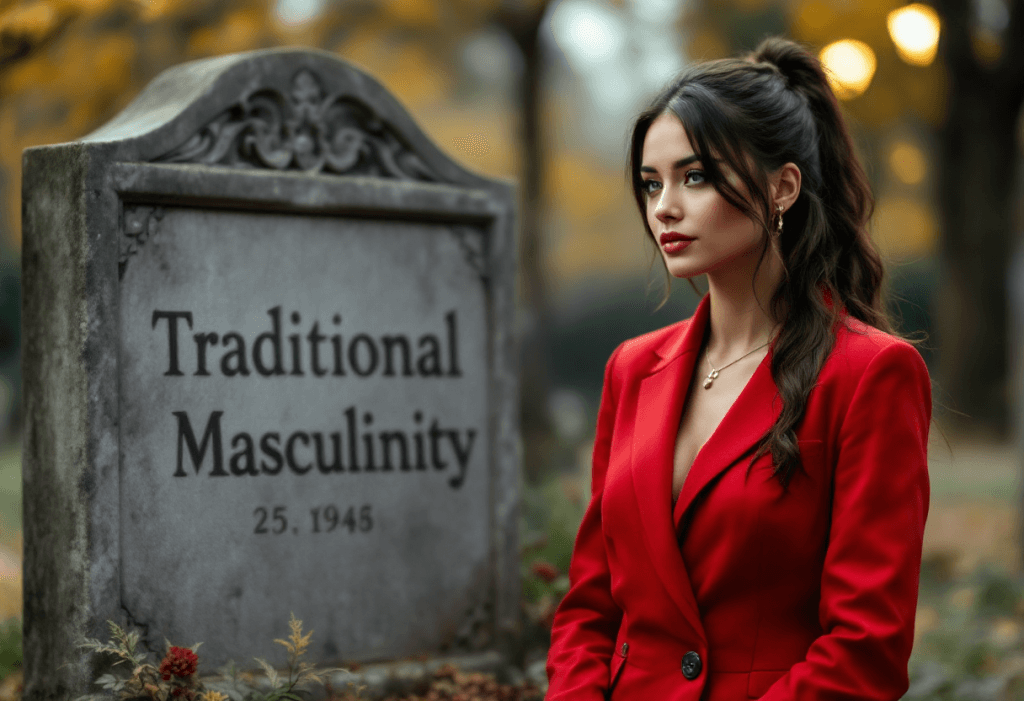
تطور الخلية الأنثوية: كيف شكّلت المجموعات الاجتماعية النسائية ما تريده النساء
لطالما احتار الإنسان في مسألة "ماذا تريد النساء؟"وهو اللغز الذي استمر لآلاف السنين. يشير علم النفس الحديث إلى أن الجواب لا يتعلق بالأهواء الفردية بقدر ما يتعلق المعايرة الاجتماعية - فالنساء بطبيعتهن متعلمون اجتماعيون بطبيعتهم تتوافق تفضيلاتهم مع قيم مجموعة أقرانهم من الإناث أو "الخلية". وبعبارة أخرى, تميل النساء إلى الرغبة فيما تريده النساء الأخريات (خاصة النساء الناجحات أو ذوات المكانة العالية). هذا الميل متجذر في البقاء التطوري: على مدى ملايين السنين، اعتمد بقاء الأنثى على البقاء على قيد الحياة على البقاء متماشية مع المجموعة. تطور العقل الأنثوي "خوارزمية الأمان الاجتماعي" - برنامج اللاوعي يسأل باستمرار "ما الذي تفعله النساء الأخريات، وكيف يمكنني البقاء بأمان داخل القطيع؟". يطلق علماء النفس هذا المصطلح التحيز للامتثال الأنثويالدافع للتعرف على الاتجاهات الأنثوية السائدة والتماشي معها. والأهم من ذلك، يتم تحديث رغبات النساء بناءً على دليل اجتماعي: يتم معايرة الرغبة الأنثوية خارجياًتتغير مع ظهور معلومات جديدة حول ما يبدو أنه "ناجح" بالنسبة للنساء الأخريات. على مر التاريخ، أعادت التحولات التكنولوجية والثقافية تعريف من يشكل "خلية نحل" المرأة وما تعتبره تلك الخلية رجلًا ناجحًا أو مسار حياة ناجحًا. فيما يلي، نستكشف هذا الجدول الزمني - من مجموعات الأقارب القديمة إلى إنستجرام - لنرى كيف شكلت الخلية الأنثوية في كل حقبة زمنية تفضيلات المرأة للشريك، للأفضل أو للأسوأ.
القبائل القديمة: القرابة والبقاء كخلية نحل
في عصور ما قبل التاريخ والعصور القبلية، كانت خلية نحل المرأة هي أقاربها وعشيرتها المباشرة - الأمهات والأخوات والعمات وكبيرات القبيلة اللاتي كن يتشاركن الحكمة حول البقاء والخصوبة. وكانت المرأة تسترشد في اختياراتها لشريكها بما يلي الحكمة القائمة على القرابة:: كان كبار السن يقدمون المشورة للنساء الأصغر سناً بشأن الرجال الذين يمكن أن يكونوا شركاء جيدين من حيث الإعاشة والحماية والنسل السليم. وفي كثير من الأحيان، كانت الزيجات مرتبة أو متأثرة بشدة بالأسرة لتحقيق أقصى قدر من مزايا البقاء على قيد الحياة لمجموعة الأقارب بأكملها. في الواقع، في الغالبية العظمى من المجتمعات التقليدية صغيرة النطاق، كان "الاختيار الحر" الفردي في الزواج نادرًا ما يكون فرديًا - حيث كان قادة الأسرة أو العشيرة ينسقون الزيجات لبناء التحالفات وضمان الموارد للمرأة وأطفالها. لذلك كانت الرغبات الشخصية للمرأة تتشكل إلى حد كبير من خلال ما علمتها عائلتها وقبيلتها أن تقدّره في الرجل: القوة ومهارة الصيد والشجاعة والخصوبة والقدرة على المساهمة في بقاء المجموعة. كان الرجل القادر على الدفاع عن القبيلة وجلب الطعام إلى المنزل والعمل بشكل جيد داخل المجموعة هو "رجل ناجح" في هذا السياق.
الإيجابيات: هذا النظام القبلي للخلية القبلية يوائم بإحكام بين تفضيلات الإناث والبقاء على قيد الحياة وتكوين الأسرة. ومن خلال مراعاة مشورة الأمهات والجدات التي تم اختبارها على مر الزمن، اختارت النساء رفقاء يحسنون من احتمالات حصولهن على أطفال أصحاء وحماية. كان التحيز للامتثال الميزةوليس علة - فقد منح النساء المرونة للتكيف مع تغير الظروف. فالنساء اللاتي اتبعن حكمة المجموعة كنّ يملن إلى البقاء والتكاثر، في حين أن النساء اللاتي انحرفن خاطرن بالنبذ (مع عواقب وخيمة محتملة في بيئة قاسية). وتشير الدراسات التطورية إلى أن الإناث اللاتي يتوافقن مع تفضيلات الرفيق المحلي يتمتعن بميزة اللياقة البدنية على مدى أجيال متعددة - فالغريبة التي لم نسخ اختيارات النساء المحليات للأزواج من أبناء من نوع "غير مفضل"، مما يضر بنجاح سلالتها. باختصار كان الاصطفاف مع الخلية الأنثوية استراتيجية للبقاء على قيد الحياة:: كان دماغ المرأة مضبوطًا على قراءة الإشارات الاجتماعية واختيار الرجل الذي يناسب تعريف المجموعة لـ "الصيد الجيد"، مما يضمن بقاءها هي وأطفالها ضمن حماية القبيلة.
السلبيات: كان التركيز على السمات التي توافق عليها المجموعة يعني محدودية الاختيار الشخصي وقلة التسامح مع التجديد. كانت أدوار النساء ورغباتهن مقيدة بما تقدره القبيلة. فالمرأة التي تجد نفسها منجذبة إلى نوع مختلف من الرجال (ربما روح فنية رقيقة في مجتمع محارب) ستواجه ضغطًا قويًا لرفض هذا التفضيل لصالح نموذج الجماعة. وقد يعني عدم الامتثال النفي الاجتماعي - وهو فعليًا حكم بالإعدام في العصور القديمة. وهكذا، في حين أن الخلية القبلية كانت تدعم تكوين الأسرة (الزواج المبكر، وكثرة الأطفال من أجل البقاء) وتوفر توقعات واضحة إضعاف الوكالة الفردية:: كانت هويات النساء ورغباتهن لا تنفصل تقريبًا عن الأعراف القبلية. ومع ذلك، كان النظام "يعمل" في هذه الحقبة - فقد كان خوارزمية الأمان الاجتماعي مكافأة اختيار الرجال الذين التقوا معايير النجاح الجماعي (مثل البراعة في الصيد أو التحالفات القرابية)، مما يعزز بشكل مباشر استقرار الأسرة القبلية.
فقد كانت النساء في هذا العصر يقلدن القوالب السلوكية لقريباتهن من النساء بشكل مباشر للغاية. فإذا امتدحت النساء الأكبر سنًا صيادًا معينًا أو أكدن على فضيلة ما (القوة، الشجاعة)، فإن الشابات كن يستوعبن ذلك باعتباره أمرًا مرغوبًا فيه. ويمكن النظر إلى ذلك على أنه أصل التعلم الاجتماعي في اختيار الرفيق. وحتى اليوم، نرى أصداءً لهذه الديناميكية القديمة: يلاحظ علماء الأنثروبولوجيا أن النساء ينتبهن غريزيًا إلى ما تجده النساء الأخريات جذابات، وهو إرث من القراءة الخاطئة لتلك الإشارات التي قد تكون قاتلة. من حيث الجوهر، فإن العقل الخلية الأنثوي القديم ضمان أن "تريد النساء ما تريده النساء الناجحات الأخريات" - لأنه في ذلك الوقت الرغبة في الشيء الخطأ قد تعني عدم النجاة من الرغبة في أي شيء على الإطلاق.
المجتمعات الدينية ما بعد آنو دوميني: الكنيسة كخلية نحل
مع ظهور الدين المنظم (حوالي الألفية الأولى بعد الميلاد وما بعدها)، توسعت الخلية الأنثوية إلى ما هو أبعد من الأقارب لتشمل الكنيسة وتعاليمها. في المجتمعات المسيحية في العصور الوسطى وأوائل المجتمعات المسيحية الحديثة (وكذلك الحضارات الدينية الأخرى)، كانت أفكار المرأة عن الرجل والأسرة المثالية تسترشد بشدة العقيدة الأخلاقية وسلطة رجال الدين. حددت الكنيسة أدوارًا واضحة: كان الزواج مقدسًا، وكان من المتوقع أن تسعى المرأة الفاضلة إلى زوج تقي من يستطيع أن يعيل الأسرة ويقودها في الإيمان. لقد خلقت العظات والاعترافات والحياة الدينية المجتمعية بشكل فعال خلية عقل مشتركة للنساء في جميع أنحاء الرعية - إحساس جماعي بما تبدو عليه "الأسرة الصالحة" تحت نظر الله.
من كان يشكل الخلية في هذه الحقبة؟ إلى حد كبير الكهنة والراهبات وشيوخ الدين إلى جانب الأمهات الأتقياء داخل المجتمع. كانت النساء يتطلعن إلى أمثلة الشخصيات الكتابية والقديسات من النساء القديسات وكذلك إلى موافقة الكنيسة. كانت الرغبة في الرجال تم تعريفها بالصفات التي أقرها الدين: حسن الخلق، والتقوى، والعفة، والقدرة على توفير. وقد لخص أحد كتيبات الزواج في القرن التاسع عشر هذا المثل الأعلى بقوله "كان الزوج المثالي رجلًا متدينًا وذا خلق حسن ويتمتع بصحة ممتازة." كانت المكانة الأخلاقية للرجل وسمعته الاجتماعية (غالبًا ما كانت مرتبطة بحضور الكنيسة والالتزام بالواجبات المسيحية) ذات أهمية قصوى. من الناحية العملية, "الرجال الناجحون ثقافياً" من هذه الحقبة كانت تلك التي النفوذ الاجتماعي والسيطرة على الموارد المهمة لذلك المجتمع - مثل الأرض أو الماشية أو التجارة أو اللقب - جنبًا إلى جنب مع الفضيلة والاحترام. فبالنسبة للمرأة في العصور الوسطى أو العصر الفيكتوري، كان الرجل المتدين الذي يستطيع أن يعيل الأسرة (وبالتالي تأمين مستقبل أطفالها) والذي يتبع القانون الأخلاقي للمجتمع هو الجائزة الكبرى.
الإيجابيات: هذه الخلية التي تتمحور حول الكنيسة بقوة دعم النماذج الأسرية التقليدية. لم يكن الزواج مجرد خيار شخصي، بل كان سرًا مقدسًا وتوقعًا مجتمعيًا. من خلال مواءمة الرغبة الأنثوية مع المبادئ الدينية، ضمنت المجتمعات معدلات زواج عالية وبنية أسرية مستقرة نسبيًا وموحدة (كان الطلاق نادرًا أو ممنوعًا؛ وكانت الأمومة غير المتزوجة موصومة). قلدت النساء القوالب السلوكية التي روجت لها الكنيسة وزميلاتها من النساء المترددات على الكنيسة: الاحتشام والعفة قبل الزواج، والإخلاص للزوج والأولاد بعد الزواج. و الغريزة الاجتماعية الأنثوية للامتثال وجدت في العقيدة الدينية مرشدًا واضحًا ومتسقًا - مما قلل من الغموض حول أهداف الحياة. وكما يشير النص بنظرة ثاقبة "عندما كان المجتمع يقدّر الأمومة، أرادت المرأة أن تكون أماً؛ وعندما كان المجتمع يكافئ التقوى والزواج، أرادت المرأة أن تكون زوجة مخلصة". في الجوهر، شجع العقل الخلية هنا النساء على الرغبة في معاقبة اجتماعياً طريق الزوجة والأم المخلصة، وهو ما أبقاهما بالفعل ضمن الحدود الآمنة للمجتمع والإيمان.
السلبيات: على الجانب السلبي، فإن الخلية الدينية التي فرضت الأدوار الصارمة والمعايير المزدوجة التي يمكن أن تحد من تحقيق المرأة لميولها الشخصية إذا اختلفت ميولها الفردية. كان تعريف النجاح ضيقًا: فالمرأة التي أرادت حياة علمية أو مستقلة لم تجد دعمًا يذكر، حيث كانت "الخلية" تعلي من شأن العمل المنزلي والطاعة. التحيز للامتثال للإناث في ظل سلطة أخلاقية قوية، كان يعني أن الأصوات المعارضة (النساء اللاتي يتوقن إلى حياة غير تقليدية أو شركاء من خارج الإيمان) غالبًا ما يتم إسكاتها أو نبذها. علاوة على ذلك، من خلال جعل الكنيسة هي الحَكَم في الحياة الأسرية، فرضت هذه الحقبة ضغطًا خارجيًا شديدًا على الزواج - فبعض النساء بقين في زيجات غير سعيدة أو حتى مسيئة لأن الأعراف الدينية كانت تستهجن تركها.
من من منظور التعلّم الاجتماعي، قامت النساء في هذا العصر بمحاكاة القديسات و"الزوجات المثاليات" تم تأييدها في المواعظ والأدب. لقد استوعبوا مفاهيم مثل الصبر والطهارة والخضوع كفضائل من خلال رؤية تلك الصفات التي تم الإشادة بها في أقرانهم من الإناث. أنتج التأثير الخلوي هنا تأثيرًا قويًا امتثال الإناث للقيم: عبر المدن والقرى، أرادت معظم النساء في جميع أنحاء المدن والقرى نوعًا مماثلًا من الرجال (مستقيم، مستقيم، ثابت، يخاف الله) لأن هذا كان النموذج الذي يتم تعزيزه في كل مكان كل أسبوع في الكنيسة. هذه الخلية الموحدة تعزيز الأسرة التقليدية، ولكن على حساب الاختيار الشخصي ومع خطر التعرض لمخاطر شديدة عقوبة عدم المطابقة (العار أو النبذ أو ما هو أسوأ من ذلك). ومع ذلك، فقد وفرت مرساة للهوية - امرأة عرفت ما يجب أن تريده في الرفيق وفي الحياة، لأن الخلية (من خلال الكنيسة) جعلته واضحًا.
ما بعد الثورتين الفرنسية والروسية: قفير المجتمع العلماني
وبحلول القرن التاسع عشر وأوائل القرن العشرين، بدأت التحولات السياسية الزلزالية - التي تمثلت في الثورة الفرنسية (1789) والثورة الروسية (1917) - في تآكل احتكار الكنيسة للقيم الاجتماعية. ومع تراجع السلطة الدينية التقليدية في العديد من المجتمعات, تحولت "خلايا" النساء إلى مصادر أكثر محلية وعلمانية:: وحدة الأسرة النووية، ودوائر الصديقات، والمعايير المجتمعية السائدة في دولة علمانية أو أيديولوجية التوجه بشكل متزايد. في هذا العصر، يمكن للمرء أن يقول "حلت الوزارات الاجتماعية محل الكنيسة كسلطة على الأسرة". وقد اهتمت الحكومات والحركات الفكرية اهتمامًا مباشرًا بتشكيل الحياة الأسرية، بدءًا من الأمومة الجمهورية في فرنسا ما بعد الثورة وحتى التجارب السوفيتية في بناء الأسرة. وجاءت التوجيهات بشأن ما يجب أن ترغب فيه المرأة من مصادر مثل الأدب التربوي، والمجلات النسائية العلمانية، والأخصائيين الاجتماعيين الأوائل، والدعاية الحكوميةبدلاً من المنبر فقط.
وهكذا أعيد تكييف رغبات النساء مع مجموعة جديدة من الأصوات. ففي الغرب في القرن التاسع عشر، على سبيل المثال الأعراف الاجتماعية الفيكتورية (وهو مزيج من بقايا الأخلاق المسيحية وقيم العصر الصناعي الجديد) عرّف الرجل المثالي بأنه معيل جيد، ومواطن مسؤول، ورجل نبيل رفيق. بدأ التأكيد على الحب والسعادة الشخصية إلى جانب الواجب. بدأ التأكيد على مفهوم "زواج الرفقة" ظهرت - تم تشجيع النساء على البحث ليس فقط عن الأمن المالي ولكن أيضًا عن شراكة حب (وإن كانت لا تزال ضمن حدود الحشمة). زخرت أدبيات النصائح في القرن التاسع عشر بإرشادات حول اختيار الزوج ذي العادات الحسنة والعمل الثابت. وفي الوقت نفسه، في سياقات ثورية مثل بدايات الاتحاد السوفيتي رسائل الخلية إلى النساء كانت مختلفة: فالرجل المثالي قد يكون عاملًا شيوعيًا مخلصًا، وقيل للنساء أن يقدّرن المساواة والمساهمة الجماعية (حتى لو كان الواقع غالبًا ما يجبرهن على العمل المزدوج كعاملات وأمهات). في كلتا الحالتين, كانت الخلية الأنثوية الآن المجتمع الأوسع ومؤسساته العلمانية.
الإيجابيات: كما علمانية الخلية اكتسبت المرأة بعض الاستقلالية في تحديد رغباتهم. تراجع الزيجات المدبرة (التي كانت سائدة على مر العصور - تذكروا أنه في أربعة من أصل خمسة مجتمعات للصيادين، كانت المغازلة الحرة غير معروفة تقريبًا) يعني أن المزيد من النساء يمكنهن اختيار شركاء على أساس المودة أو الميل الشخصي. تقلصت المجموعة المرجعية للمرأة العادية إلى عائلتها وأصدقائها المقربين، الذين قد يحترمون رغباتها أكثر من مرسوم الكنيسة غير الشخصي. كما أدخلت هذه الحقبة أيضًا التعددية: كان للمجتمعات المختلفة (الحضرية مقابل الريفية، الأرستقراطية مقابل الطبقة العاملة) توقعات "خلية" مختلفة، مما أعطى المرأة فسحة من الحرية للعثور على ثقافة فرعية تناسبها. من حيث الجوهر، فإن خوارزمية اجتماعية أنثوية كان لا يزال يتطلع إلى الآخرين للحصول على إشارات، لكن "الآخرين" أصبحوا الآن دائرة أصغر (العائلة والجيران) ويمكن أن تكون نصائحهم أكثر واقعية وشخصية. وظلت النماذج العائلية التقليدية تحظى بالتقدير، ولكن مع فكرة جديدة مفادها أن السعادة المتبادلة هي الهدف. نحن نرى هنا الجذور المبكرة للرومانسية الحديثة - أرادت النساء الحب و الاستقرار، وهو مزيج بدأ الاحتفاء به في الروايات والفكر الاجتماعي في القرن التاسع عشر. وقد دعم ذلك الأسر المبنية على الروابط العاطفية، التي يمكن القول إنها كانت أقوى من الواجب وحده.
السلبيات: ومع ذلك، فقد أدى فقدان صوت الخلية الأخلاقية الواحدة إلى تقديم الارتباك والإشارات المتضاربة. في أواخر القرن التاسع عشر وأوائل القرن العشرين، سمعت النساء رسائل مختلطة: كانت الأخلاقيات الفيكتورية لا تزال تشدد على العفة وتدبير المنزل، لكن الأفكار النسوية المبكرة والضرورة الاقتصادية دفعتها نحو التعليم والعمل. يمكن أن تختلف معايير المجتمع بشكل كبير - قد تبشر عائلة المرء بالطرق القديمة بينما كان الأقران الجدد يدافعون عن الأفكار الليبرالية. بدون قالب الكنيسة ذي الحجم الواحد، كافحت بعض النساء مع "أي خلية نحل أتبع؟" شهدت هذه الفترة أيضًا الاضطرابات الاجتماعية في بنية الأسرة. على سبيل المثال، سمحت الثورة الفرنسية لفترة وجيزة بالطلاق والزواج العلماني بشكل أكبر، وأدخل الاتحاد السوفييتي في وقت مبكر إصلاحات جذرية على قوانين الزواج (الطلاق السهل، وتعزيز الرعاية المجتمعية للأطفال) قبل أن يعود لاحقًا إلى السياسات المؤيدة للأسرة. هذه التقلبات في بعض الأحيان إضعاف الاستقرار الأسري التقليدي - ارتفعت معدلات الطلاق حيث أصبح قانونياً، وترسخت فكرة أن الزواج عقد قابل للحل. كانت حرية المرأة المتزايدة في الاختيار تعني زيادة حرية المرأة في الإجازة أو تجنب الزواج أيضًا. و تأثير الخلية الأنثوية وهكذا بدأت النساء في التفتت: استمرت بعض النساء في التمسك بالنموذج التقليدي لأمهاتهن وجداتهن، بينما استلهمت أخريات من نماذج علمانية ناشئة (مثل المطالبات بحق الاقتراع، والكتاب، والناشطات).
في هذه البيئة، غالبًا ما كانت النساء في هذه البيئة يقلدن قوالب الدائرة الاجتماعية المباشرة. إذا تزوج جميع صديقاتها في سن العشرين وأسسوا عائلات، شعرت المرأة بالضغط لفعل الشيء نفسه. وإذا كان أقرانها المتعلمون يؤخرون الزواج من أجل الوظائف أو الأسباب، أصبح ذلك هو القاعدة بالنسبة لها. كانت الخلية الآن أصغر إلى حد ما في نطاقها (الكنيسة المحلية بدلاً من الكنيسة العالمية) ولكنها كانت أكثر تنوعًا. والجدير بالذكر أنه بحلول أوائل القرن العشرين، كانت الدولة نفسها تقوم بدور الأب (أو الأم) الذي يحدد المثل العليا للأسرة - على سبيل المثال، كانت الأنظمة القومية تضفي على المرأة صفة "أم المواطنين"، بينما كانت الأنظمة الشيوعية تضفي عليها صفة "الرفيق العامل والأم". في كلتا الحالتين، تأثرت رغبات المرأة (بالنسبة للزوج المثالي أو الحياة المثالية) بـ الدعاية الحكومية وقادة المجتمع. الخيط المشترك هو أن ظلت الرغبة الأنثوية مضبوطة اجتماعياً:: لا تزال المرأة مطلوبة ما أرادته النساء الأخريات اللاتي اعتبرن ناجحاتسواء تم تعريف هذا النجاح على أنه امتلاك عائلة كبيرة وسعيدة في مزرعة أو أن تكون امرأة عصرية حاصلة على شهادة جامعية. كانت النماذج العائلية التقليدية في توازن غير مستقر - لا تزال مركزية، ولكنها تتنافس الآن مع خيارات جديدة كان على العقل الخلية أن يأخذها في الحسبان.
عصر هوليوود: الصور السينمائية المنسقة للرغبة في السينما
أدخل منتصف القرن العشرين وسائل الإعلام الجماهيرية في المعادلة، و أصبحت هوليوود خلية نحل جديدة لخيال النساء. ومع ازدهار السينما (من العصر الصامت إلى العصر الذهبي لهوليوود وما بعده)، تعرضت ملايين النساء إلى صور منسقة لرغبة الأنثى والرومانسية. على الشاشة، رأوا قصص مثالية عن الحب والسحر و"السعادة الأبدية" - وبدأت هذه القصص تخبرنا بما يجب أن ترغب فيه النساء. في الأساس، شملت الخلية الأنثوية الآن نساء خياليات:: الشخصيات التي تجسدها ممثلات مبدعات، وكذلك الممثلات أنفسهن كرائدات في عالم الموضة.
في هذه الحقبة أصبحت المرأة التي تظهر على الشاشة وتطلعاتها الرومانسية نموذجاً مرجعياً للنساء الواقعيّات ممثلات مثل مارلين مونرو والشخصيات التي لعبوها كان لها تأثير كبير على الثقافة النسائية. على سبيل المثال، لم تكن شخصية مونرو تدل فقط على الجمال; جسدت المرأة التي استخدمت أنوثتها للحصول على السلطة والمكانة. قد تحاكي النساء في الخمسينيات أسلوب مونرو أو الطريقة التي أسرت بها شخصياتها الرجال الأقوياء. وفي وقت لاحق، مثلت شخصيات مثل أودري هيبورن البطلة الأنيقة المستقلة والرومانسية في آن واحد التي تطمح الكثير من النساء أن تكون مثلها. في هذه الأفلام، كانت رجل ناجح غالبًا ما يُصوَّر على أنه بطل رومانسي قوي وأنيق وأحياناً ثري - فكر في الرجال اللطفاء في الأفلام الرومانسية الكلاسيكية أو الأبطال الأقوياء في أفلام المغامرات. بدأت توقعات النساء عن مدى جاذبية الرجل في أن يكون مرغوبًا فيه تشمل سمات هوليوود: مزيج من الجاذبية والمظهر ولمسة من الدراما.
الإيجابيات: عززت هوليوود لفترة من الوقت المُثُل الرومانسية التقليدية في عبوة لامعة. انتهت العديد من الأفلام الكلاسيكية بالزواج أو صورت الحياة الأسرية بصورة إيجابية (وإن كانت مثالية). وقد ساعد ذلك على دعم النماذج الأسرية التقليدية من خلال إضفاء الطابع الرومانسي عليها - تم تشجيع النساء على الرغبة في الزواج، ولكن كنهاية سعيدة حالمة مع شخصية الأمير الساحر. كان التأثير الخلوي هنا هو أنه عندما رأت الجماهير النسائية نجاح مجاز رومانسي معين على الشاشة ("الغريب الوسيم الذي يحنو سرًا"، "الفتى الشرير المخلص الذي يصبح زوجًا محبًا")، فقد وضع ذلك قالبًا ينتشر بين النساء كشيء يجب البحث عنه. في الواقع، أصبحت بعض المجازات السينمائية نصوصًا اجتماعية شبه لا شعورية: الرجل يتقدم للزواج في لفتة كبيرة، والحب الحقيقي ينتصر على كل شيء، إلخ. نسخت النساء الأزياء والسلوكيات وديناميكيات العلاقات من الأفلام. على سبيل المثال، بعد مشاهدة فيلم مشهور، قد ترغب النساء فجأة في الحصول على نوع الفستان الذي ترتديه البطلة أو يبدأن في توقع أنواع إيماءات التودد التي أظهرها البطل. هوليوود في الأساس تصنيع خلية نحل على المستوى الوطني/الدولي - مجموعة مشتركة من المُثُل والتخيلات التي استوعبتها النساء بشكل جماعي.
السلبيات: ومع ذلك، قامت خلية هوليوود أيضًا بضخّ الأوهام والضغوط في الرغبة الأنثوية. غالبًا ما كان التصوير السينمائي للرومانسية بعيدًا عن الواقع: كان الرجال الأبطال مثاليين بشكل مستحيل أو متكلفين بشكل لا يتسم به الأزواج العاديون. أدت هذه الفجوة إلى بعض خيبة الأمل. قد تجد النساء اللاتي تربين على خيالات الشاشة الفضية أن الرجال الحقيقيين والزيجات الحقيقية يفتقرون نسبيًا إلى العاطفة أو البريق، مما قد يقوض الرضا عن الحياة الأسرية العادية. بطرق خفية، يمكن للمثالية التي تقدمها هوليوود أن إضعاف التكوين الفعلي للأسرة من خلال جعل النساء (والرجال) أقل اكتفاءً بالشركاء "العاديين". هناك أيضًا مشكلة أن هوليوود في منتصف القرن العشرين قدمت في الغالب واحد قالب النجاح المهيمن: علاقة رومانسية أحادية الجنس بين الجنسين تتوج بالزواج (غالبًا ما يكون الرجل هو المعيل والمنقذ). أما النساء اللاتي لم تتناسب حياتهن أو رغباتهن مع هذا القالب، فلم يكن لهن تمثيل يذكر في الخلية، وربما شعرن أن هناك شيئًا خاطئًا بهن.
ومع ذلك، كانت هوليوود قوية كقوة تشكيل للهوية. بدأت النساء في تلك الحقبة في التماهي ليس فقط مع نصيحة أمهاتهم، ولكن مع أيقونات نسائية أكبر من الحياة. وكما يشير النص، تكتسب النساء المؤثرات ثقافيًا في أي عصر من العصور أتباعًا: "بعض النساء أصبحن مؤثرات ثقافيًا... ليس فقط لجمالهن أو موهبتهن، ولكن لإبراز صورة المرأة التي حققت نتائج مرغوبة". في حقبة هوليوود، كانت تلك النتائج هي اقتناص الرجل الوسيم والعثور على الحب، وغالبًا ما كانت تلك النتائج هي تحقيق التوازن بين ذلك وبين السحر الشخصي أو المهنة (مثل النساء العاملات في بعض الحبكات). كانت خوارزمية اجتماعية أنثوية ما زالوا يقلدون ما يبدو أنه ناجح - مستقاة الآن من الأفلام. إذا تم الاحتفاء بشخصية كاثرين هيبورن لكونها بارعة ومستقلة مع حصولها على الرجل، فقد لاحظت النساء ذلك. وإذا تزوجت نجمة متألقة من رجل أعمال ثري في القصة، فقد دخل ذلك أيضًا إلى النفس الجماعية النسائية. وهكذا، خلقت هوليوود نوع جديد من العقل الخلية:: نساء متباينات، من ربات البيوت إلى الشابات العازبات، يشاهدن جميعًا نفس الفيلم ويحدثن رغباتهن لتتناسب مع البطلات على الشاشة.
المسلسلات التلفزيونية وجيل نتفليكس: الروايات الطويلة كخلية نحل
مع انتشار التلفاز في كل مكان في أواخر القرن العشرين وتطوره إلى مسلسلات البث المباشر اليوم، اتخذت الخلية النسائية شكلاً أكثر غامرة. على عكس الأفلام ذات الساعتين المسلسلات التلفزيونية (من المسلسلات التلفزيونية والمسلسلات الهزلية إلى المسلسلات الدرامية ومسلسلات Netflix الأصلية) إشراك المشاهدين على مدار ساعات وسنوات عديدة، مما يسمح باستثمار عاطفي أعمق في حياة الشخصيات. وقد ساهم هذا السرد القصصي الطويل في تشكيل رغبات النساء بشكل عميق من خلال توفير نماذج متسلسلة من الحب والنجاح والصراع التي يستوعبها المشاهدون ويقلدونها أحيانًا. في هذه المرحلة، اتسعت المجموعة المرجعية للنساء لتشمل مجموعات الأصدقاء الخيالية والعائلات التي يشاهدنها على الشاشة أسبوعًا بعد أسبوع.
من هي الخلية هنا؟ إنه مزيج من الشخصيات الخيالية ومجتمعات المعجبين من حولهم. قد تناقش النساء في "جيل نيتفليكس" تحولات الحبكة وخيارات الشخصيات مع صديقاتهن الحقيقيات، مما يمزج بين الخيال والواقع كمدخل اجتماعي مشترك. على سبيل المثال، قد تكون مجموعة من الصديقات مدمنات على الجنس والمدينة أو غريز أناتوميويصبح تصوير المسلسل للمواعدة والوظيفة والزواج نموذجًا يرجعون إليه بشكل جماعي. يمكن أن تختلف الرغبة في الرجال، كما يصورها التلفزيون الشعبي، فقد يمجد أحد المسلسلات الحبيب الحساس والمتفهم، بينما يمجد مسلسل آخر الفتى السيئ الذي يلين مع مرور المواسم. ولكن بشكل عام، قدم التلفزيون بشكل عام طيف من النماذج الأصلية للذكور وديناميكيات العلاقة التي يمكن للنساء أخذها بعين الاعتبار. كما أنه جعل من مناقشة هذه التوقعات أمرًا طبيعيًا؛ حيث يمكن للنساء مقارنة الشركاء الحقيقيين بالشخصيات التلفزيونية المحبوبة (على سبيل المثال، "إنه ليس جاك بيرسون من هذا نحن") في حديثهم الخلية.
الإيجابيات: مسلسلات طويلة الأمد تقدم المزيد الواقعية والتنوع في العلاقات، والتي قدمت في بعض الأحيان نماذج أكثر صحة. لم تكن كل العلاقات التلفزيونية مثالية؛ فقد كانت البرامج تصور الصراعات والعيوب والنمو. وهذا ما أعطى النساء إحساسًا بأن النجاح في الحب لا يعني الكمال - وهو فارق بسيط ربما أغفلته أفلام هوليوود السابقة. وأيضًا، نظرًا لأن المسلسلات التلفزيونية استهدفت جمهورًا متخصصًا، كان بإمكان النساء أن يجدن في المسلسلات التلفزيونية ما يلائمهن: فقد تتابع إحداهن شخصية امرأة مهنية - امرأة توازن بين العمل والحب (ماري تايلر مور في السبعينيات)، بينما وجد آخر العزاء في المسلسلات التي تتمحور حول العائلة (عرض كوسبي, جيلمور جيرلزإلخ). في أفضل الحالات، كانت هذه الروايات تعلّم حل المشاكل والتعاطف - حيث رأى المشاهدون الشخصيات وهي تتخطى المشاكل الزوجية أو مشاكل الحياة الفردية ويمكنهم تعلم الدروس المستفادة. النماذج العائلية التقليدية في عصر التلفزيون تم دعمها وتحديها على حد سواء: عززت المسلسلات الهزلية العائلية في الخمسينيات والتسعينيات بقوة معايير الأسرة النووية (مع الوالدين المثاليين والحكيمين والقرارات اللطيفة)، والتي دعمت بالتأكيد المثل الأعلى للأسرة. وفي الوقت نفسه، قدمت الأعمال الدرامية و"الدرامية" الأحدث ترتيبات أكثر حداثة (الأمومة العازبة، والمساكنة، وما إلى ذلك)، مما يؤكد صحة تلك المسارات. وهكذا حصلت النساء على فهم أكثر تنوعًا حياة سعيدة ≠ صيغة واحدة. أصبح العقل الخلوي، على الأقل، أكثر تسامحًا إلى حد ما مع تقديم وسائل الإعلام نماذج متعددة لنجاح المرأة (من الأم المتفانية إلى العزباء المستقلة).
السلبيات: من ناحية أخرى، كان التصوير التلفزيوني لا يزال منسقة وغير واقعية في كثير من الأحيانمما يؤدي إلى توقعات مشوهة. ووجدت الدراسات أن مشاهدي التلفاز بكثرة يمكن أن يطوروا معتقدات غير واقعية حول العلاقات - على سبيل المثال، توقع العاطفة والدراما المستمرة، أو على العكس من ذلك أن تصبح ساخرة من وجود زيجات سعيدة. المصطلح "متلازمة المسلسلات التلفزيونية" يمكن أن يصف كيف أصبحت بعض النساء يتوقعن أن تعكس حياتهن العاطفية الأقواس الدرامية للتلفزيون: إثارة لا نهاية لها، وتشابكات معقدة، وتوأم روح "OTP" (ثنائي حقيقي واحد) بعد العديد من التقلبات. نادراً ما يمكن للحياة الواقعية أن تنافس الرومانسية المكتوبة، وهذا يمكن أن يولد عدم الرضا. في الواقع، لاحظ الباحثون أن أولئك الذين يشاهدون التلفزيون كثيرًا يميلون إلى المزيد من الآراء السلبية حول الزواج - ربما لأن التلفزيون نادراً ما يعرض زيجات ناجحة وسعيدة على المدى الطويل. وبدلاً من ذلك، تشيع النزاعات والخيانة الزوجية (مادة الدراما)، الأمر الذي قد يجعل المشاهدين يتساءلون لا شعورياً عن قيمة الالتزام. وهكذا، فإن خلية نيتفليكس/التلفزيون/نتفليكس في بعض النواحي إضعاف التطلعات الأسرية التقليدية:: إذا كان كل زواج على الشاشة يحتوي على خيانة زوجية أو كل سيناريو مواعدة ينتهي بحسرة حتى النهاية، فقد يبدأ المشاهد في التعامل مع العلاقات الحقيقية بانعدام الثقة أو بمعايير غير واقعية.
من المؤكد أن النساء خلال هذه الحقبة قلدن سلوكيات وصيحات من مسلسلاتهن المفضلة. من اتجاهات الموضة (قصة شعر "راشيل" من مسلسل الأصدقاء) إلى المواقف (من السخرية من سينفيلد أو تمكين الجنس والمدينة)، عكست الجماهير النسائية ما كان له صدى في نفوسهن. وتم تضخيم تأثير الخلية من خلال المنتديات على الإنترنت وأحاديث المبردات المائية: فقد قامت النساء بشكل جماعي بتشريح الحلقات وبذلك عززن الدروس أو المثل العليا التي صورتها تلك المسلسلات. على سبيل المثال، إذا تحدثت جميع النساء في العمل عن لفتة رومانسية كبيرة في حلقة الليلة الماضية، فهذا يشير إلى المجموعة التي هذا هو نوع من الرومانسية المرغوبة. وعلى الجانب الآخر، إذا سلط أحد المسلسلات الضوء على الجانب السلبي للزوج الخائن، فإن ذلك أيضًا يصبح حكاية تحذيرية تنتشر في الخلية. خلق السرد القصصي التسلسلي بشكل أساسي دليلاً اجتماعياً موسعاً:: تبدو مشاهدة رحلة امرأة خيالية على مدار عدة مواسم وكأنها مشاهدة صديقة، لذا فإن نتائجها (سواء كانت جيدة أو سيئة) تُعلم المشاهدين بقوة إحساسهم بما يصلح في الحياة. وبحلول نهاية هذه الحقبة، كان لدى الخوارزمية الاجتماعية النسائية مجموعة بيانات أكبر بكثير من أي وقت مضى - ليس فقط الأقران المباشرين وعدد قليل من نجوم السينما، ولكن عدد لا يحصى من الشخصيات والقصص. وكان يتم تحديثها باستمرار: فمع انتشار أحد الاتجاهات في التلفزيون (على سبيل المثال، النساء العاملات "اللاتي حصلن على كل شيء" في الثمانينيات)، كانت موجة من النساء تلاحق ذلك - حتى ظهرت قصة جديدة لتغير الأولويات مرة أخرى.
انستجرام وعصر وسائل التواصل الاجتماعي: الخلية العالمية وبكرة الإضاءة
إذا قام التلفزيون بتوسيع نطاق المجموعات المرجعية النسائية، فإن فجر عصر وسائل التواصل الاجتماعي الأمر برمته. ومع وجود منصات مثل إنستجرام وتيك توك وفيسبوك، تتعرض النساء الآن إلى تغذية عالمية لا حدود لها من "النجاح" الأنثوي المنسق. في هذا العصر، فإن خلية المرأة هي في الواقع عالم النساء على الإنترنت - من زملاء الدراسة في المدرسة الثانوية إلى المشاهير والشخصيات المؤثرة في جميع أنحاء العالم. والأهم من ذلك أن ما تراه هو لا صورة أصيلة ومتوازنة لحياة هؤلاء النساء، بل صورة حقيقية ومتوازنة لحياة هؤلاء النساء، بل صورة مصفاة بعناية. وقد أدى ذلك إلى تشويه هائل في خوارزمية التعلم الاجتماعي للإناث، وهو تشويه له آثار غير مسبوقة على رغبات النساء ورفاههن العاطفي.
واليوم، ترى المرأة التي تتصفح صفحتها على مواقع التواصل الاجتماعي نساء أخريات يبدو أنه يفعل كل شيء. على سبيل المثال، قد ترى "رائدة الأعمال الناجحة البالغة من العمر 25 عاماً التي تنشر من بالي، والأم لثلاثة أطفال وهي أيضاً مؤلفة من أكثر المؤلفات مبيعاً، والمؤثرة في مجال اللياقة البدنية التي تحصل على درجة الدكتوراه، ومدونة السفر التي تدير شركة ناشئة" - وباختصار، تبدو كل امرأة أخرى متعددة المواهب بشكل مستحيل ومزدهرة إلى الأبد. إن بيانات الخلية القادمة تشير إلى أن "المرأة الناجحة" هي تلك التي في وقت واحد يحقق في جميع النطاقات:: المهنة، الأسرة، الجمال، الحياة الاجتماعية، إلخ. على عكس العصور السابقة التي كان يهيمن فيها قالب واحد (مثل أن تكوني أمًا صالحة أو لديك مهنة، حسب الحقبة الزمنية)، الآن كل قالب موجود في وقت واحد في الخلاصة تُظهر وسائل التواصل الاجتماعي سيلًا لا حدود له من الأخبار التي لا حصر لها عن زواج امرأة رائعة، وأخرى عن حياتها المهنية الرائعة، وثالثة عن رحلاتها حول العالم - وعقل الأنثى الذي تطور لاستخلاص ما الذي يعمل مع الآخرين, تعاملها كلها كبيانات ذات صلة لما يجب أن تريده. وهذا يؤدي إلى ما يسميه النص "تغذية الخوارزمية ببيانات متناقضة وإخراج رغبات متناقضة". تريد النساء كل شيء دفعة واحدة لأن الخلية تقدم كل شيء على أنها قابلة للتحقيق ومرغوبة.
الإيجابيات: من الناحية النظرية، يمكن لوسائل التواصل الاجتماعي أن تكون خلية نحل عالمية تمكينية. فهي تعرّف النساء على عدد لا يحصى من النماذج والإمكانيات التي لا حصر لها خارج بيئتهن المباشرة. يمكن لامرأة في بلدة صغيرة أن ترى أمثلة لمديرات تنفيذيات أو رياضيات أو فنانات أو مغامرات، وتستلهم منها السعي وراء حياة لم تكن لتتخيلها لولا ذلك. هناك أيضًا شعور بالمجتمع دون حدود مادية - يمكن للمرأة أن تجد مجموعات متخصصة (من مدونات الأمهات إلى رائدات الأعمال في مجال التكنولوجيا) وتستمد الدعم والأفكار منهن. وقد أدت وسائل التواصل الاجتماعي إلى تضخيم الأصوات من خلفيات متنوعة، مما قد يوسع نطاق تعريف النجاح (مثل المؤثرات الإيجابيات في الجسم اللاتي يغيرن معايير الجمال، أو الأمهات الماكثات في المنزل اللاتي ينشئن شبكات داعمة ويبينن قيمة هذا المسار). إذا تم استخدامها بوعي، يمكن أن تساعد خلية النحل العالمية النساء على تنظيم الخاصة بهم الرؤية من خلال انتقاء واختيار القدوة الأصيلة.
السلبيات: لسوء الحظ، فإن تفوق السلبيات بشكل كبير الإيجابيات في الممارسة العملية. تقدم وسائل التواصل الاجتماعي خلية النحل المشوهة ذات الضغط العالي أن خوارزمية السلامة الأنثوية غير مجهزة للتعامل معها. وكما جاء في أحد التحليلات "لا توسع وسائل التواصل الاجتماعي مجموعة البيانات فحسب، بل تفسدها بشكل أساسي. حيث يتم الآن تغذية الخوارزمية بلقطات منتقاة بعناية بدلاً من صور الحياة الكاملة... وهي في الأساس إعلانات لنسخة كل امرأة من النجاح". ومن الناحية النفسية، يخلق هذا الأمر مشكلة نفسية هائلة. "تشويه بكرة الضوء" تقارن النساء أنفسهن بـ أفضل اللحظات الجماعية من آلاف آخرين. والنتيجة هي انتشار وباء الخوف من الضياع اللانهائي (الخوف من الضياع). تستنتج الخوارزمية الاجتماعية أن أي مسار حياة واحد غير كافٍ: "المرأة الناجحة لا تختار بين مسارات الحياة المختلفة. بل يسعين وراءها كلها في وقت واحد". هذا التكليف المستحيل يجعل النساء يشعرن بأن كل ما يفعلنه يجب أن يفعلن عكسه. وكما يشير النص، فإن المرأة العصرية "تريد المهنة و العائلة، المغامرة و الاستقرار، والاستقلالية و الشراكة ... النمو الروحي و النجاح المادي". كل الرغبات تصل إلى الحد الأقصى، والكثير منها يتعارض مع بعضها البعض (مثل الاستقلالية التامة مقابل الشراكة المخلصة).
إن التداعيات على تكوين الأسرة التقليدية شديدة. عندما تغرق الخلية النساء بـ توقعات مستحيلةمما يجعل أي خيار يبدو وكأنه تضييق سابق لأوانه للخيارات، مما يجعل النساء بطبيعة الحال يؤخرن الالتزام بمسار واحد. في الواقع، نرى الآن نمطًا من الشلل والاستكشاف المطول: "عندما ترغب في كل شيء، فإن اختيار أي شيء يشعرك بالفشل... لذلك تؤجل النساء القرارات الرئيسية، وتبقي الخيارات مفتوحة، وتقاوم الالتزام لأن الالتزام يعني التخلي عن الاحتمالات الأخرى". فقد ارتفع متوسط سن الزواج والولادة الأولى في العديد من البلدان، كما أن هناك مجموعة متزايدة تتخلى عن هذه الأمور بالكامل - ليس دائمًا باختيار صريح، ولكن غالبًا ما يكون ذلك بسبب الشلل التحليلي والشعور بأن "الاستقرار الآن يعني أنني سأفقد إنجازات أخرى". ويربط النص هذا الأمر مباشرة بالمقارنة الاجتماعية، مع الإشارة إلى أن الأجيال السابقة من النساء لم تواجه هذا الشلل في الاختيار الزائد: "عندما أرادت جدتك أن تكون زوجة وأمًا صالحة، كان الطريق واضحًا... تواجه المرأة العصرية مشكلة مستحيلة في تحقيق أقصى قدر من التحسين: كيف يمكن تحقيق أقصى قدر من النجاح في الحياة المهنية، والأمومة، والرومانسية، والنمو الشخصي، والتأثير الاجتماعي، والاستقلال المالي، والصحة، والجمال، والتقدم الفكري - كل ذلك في آن واحد؟". إن الخسائر العاطفية واضح في الأبحاث والاستطلاعات: القلق والاكتئاب وعدم الرضا تؤثر بشكل غير متناسب على شابات اليوم، على الرغم من زيادة الحريات والفرص أكثر من أي وقت مضى. ومن خلال محاولة تحسين الحياة لتتناسب مع ما ينشر على إنستغرام، فإنهن يطاردن هدفًا متحركًا يتألف من أفضل ما لدى الآخرين، وهي وصفة للتعاسة المزمنة.
تميل النساء في وسائل التواصل الاجتماعي أيضًا إلى محاكاة الاتجاهات مع الكثافة الفيروسيةحتى لو كانت هذه الصيحات عابرة أو سطحية. إن تأثير خلية النحل في ازدياد: يمكن لمنشور واحد منتشر عن سمة "الزوج المثالي" أو منشور على تطبيق تيك توك عن الروتين الصباحي #ThatGirl أن يطلق موجة تقليد عالمية. ومع ذلك، فإن مطاردة هذه الشظايا لا تؤدي إلى الرضا عن الحياة المتماسكة. وعلاوة على ذلك، فإن الافتقار إلى الأصالة - بما أن القليل من الناس ينشرون صراعاتهم - يخدع خوارزمية الأمان القديمة. فهي لا ترى سوى النجاح في كل مكان ("الجميع يحققون كل هذه الأهداف، فلماذا لا تحققها أنت؟") ولذا فهي الاحتجاجات أي دورة لا تحقق جميع المربعات. هذه لعبة لا يمكن الفوز بها من الأساس، وهي إضعاف نماذج الأسرة التقليدية إلى حد الانهيار. وبدون تدخل، تجد العديد من النساء أنه من المستحيل تقريبًا إعطاء الأولوية للزواج أو الأسرة في العشرينات من العمر عندما تصرخ خلية النحل في وجوههن للحصول على شهادات جامعية والسفر حول العالم وكسب المال والحفاظ على لياقتهن البدنية وما إلى ذلك، كل ذلك قبل "الاستقرار". حتى أولئك اللاتي في علاقات عاطفية قد يشعرن بالضغط لأن شراكتهن ليست "مثالية بالصورة المثالية" كما يرونها على الإنترنت، مما يؤدي إلى عدم الرضا أو الانفصال سعياً وراء الوهم.
باختصار، لقد أثقلت خلية نحل عصر إنستغرام النفس الأنثوية بـ الكثير من المدخلات. إنها منافسة عالمية ومنافسة دائمة من اللقطات البارزة - في تناقض صارخ مع البيانات "المحدودة ولكن الثابتة" للمجتمع النسائي المباشر في الماضي. يعمل الآن التحيز ضد المرأة على نطاق عالمي، وهو ما لا يمكن لأي فرد أن يواكب. وقد أدى ذلك إلى خلق جيل من النساء اللاتي كما يقول الموجه معايرة خارجية إلى أقصى الحدود: إن إحساسهم بما يريدونه ينجذب في آلاف الاتجاهات من خلال موجز الأخبار المتداول. فبدون بوصلة داخلية قوية أو تأثير أساسي (سواء كانت القيم العائلية أو الإيمان الشخصي أو معرفة الذات)، يصبحون مشلول وقلق بشأن كل خيارخوفاً من أن يكون هذا هو الخطأ مقارنةً بما تفعله بعض النساء الأخريات. والنتيجة النهائية هي تكافح العديد من النساء المعاصرات من أجل تكوين أسرة مستقرة وتقليدية من النوع الذي كان يعتبره العصر السابق أمرًا مفروغًا منه. لم تعد الإشارات الاجتماعية تشير إلى اتجاه واحد - بل أصبحت تشير إلى كل مكان، وبالتالي لم تعد تشير إلى أي مكان.
الخاتمة: من عقل الخلية إلى الاختيار الفردي
وبالنظر إلى هذه العصور، يظهر نمط واضح: ** الرغبة الأنثوية هي رغبة اجتماعية متطورة الخوارزمية - نظام مبرمج على شكل خلية نحل يتم تحديثه مع تطور تعريف نجاح المرأة. لم تكن تفضيلات النساء في الرجال والحياة موجودة أبدًا في فراغ؛ فقد كانت تتأثر دائمًا بما تراه "خلية" النساء الأخريات المحيطين بها من النساء الأخريات مرغوبًا أو ناجحًا. في العصور القديمة، أدى ذلك إلى إعطاء النساء الأولوية لسمات البقاء في الرفيقات، مسترشدات في ذلك بالقرابة والضرورة. أما في المجتمعات الدينية، فقد أدى ذلك إلى مواءمة رغبات المرأة مع الإيمان والاستقرار الأسري. أما في العصور الأكثر علمانية والتي تحركها وسائل الإعلام، فقد أدى ذلك إلى جعل مُثُل النساء تتبع الروايات والصور المهيمنة على مجالهن الاجتماعي - من الشاشة الفضية إلى شاشة الهاتف الذكي.
كان لكل مرحلة مزاياها في تعزيز التماسك الاجتماعي أو التكيف الاجتماعي، وكان لكل مرحلة سلبياتها في الحد من تحقيق المرأة لشخصيتها أو إرباكها. واليوم، نحن نواجه أكثر تأثيرات خلية النحل تعقيدًا على الإطلاق: قصف رقمي لحياة منسقة تنتج ما أطلقنا عليه "تشويه بكرة الضوء" يمكن أن يؤدي التحيز للامتثال الأنثوي، الذي كان في يوم من الأيام استراتيجية منقذة للحياة، إلى مطاردة السراب - محاولة الارتقاء إلى مستوى نماذج النجاح التي لم يتم تحديدها خارجيًا فقط، بل غالبًا ما تكون وهمية أو غير قابلة للتحقيق في المجمل. لا عجب في أن المرأة العصرية غالبًا ما تعاني من صراع داخلي، حيث "رسائل مختلطة حول ما يجب أن تريده المرأة" تسفر عن تناقضات داخلية. قيل لهم من قبل الخلية أن عليهم أن كن كل شيء وتريد كل شيء، وهي وصفة من شأنها أن تفرط في تحميل دوائر أي شخص.
بالنسبة للقرّاء الذكور الذين يسعون إلى فهم النساء في حياتهم، فإن الخلاصة الرئيسية هي المنظور المنهجي والتعاطف. إن رغبات المرأة في أي لحظة معينة ليست عشوائية أو "طائشة" - فهي ناتج نظام معالجة اجتماعية قوي تتعلم وتتكيف باستمرار. عندما تتغير تفضيلاتها أو تبدو متضاربة، فغالبًا ما يكون ذلك بسبب استجابتها (بوعي أو بدونه) لمعلومات اجتماعية جديدة حول ما هو مرغوب فيه. وإدراك ذلك يمكن أن يساعد الرجال على دعم المرأة خلال هذه الضغوط. لا يعني ذلك أن المرأة العصرية غير واقعي عن طريق الصدفة؛ حيث يتم اختراق أدمغتهم بشكل فعال من خلال الحمل الزائد من الأدلة الاجتماعية، التي تخبرهم أنه بغض النظر عن اختيارهم، فإن بعض النساء الأخريات اخترن خيارًا مختلفًا ويبدو أنهن سعيدات.
إن التحدي والفرصة الآن، كما أبرزت رؤى النص، هو أن تقوم النساء (والمجتمع بشكل عام) بتطوير "الوعي بالخوارزمية". وهذا يعني فهم تأثير الخلية ولكن دون أن تكون مستعبدة لها. فالنساء الأكثر إشباعًا، وفقًا للتحليل، هنّ أولئك اللواتي "احترام طبيعتهم الاجتماعية مع الحفاظ على استقلاليتهم الفردية" البقاء على اتصال مع المجتمع الأنثوي ولكن مع تصفية مدخلاته من خلال قيمهم الخاصة. من الناحية العملية، قد يعني ذلك الخروج عمدًا من العقل الخلية - أي قضاء بعض الوقت بعيدًا عن الخلاصة، والتساؤل عما إذا كان ما يريده المرء هو حقًا اختيار ذاتي أم مجرد رغبة مقلدة. وقد يعني أيضًا إعادة التركيز على الاحتياجات البشرية الخالدة بدلًا من البدع الرائجة: كما يخلص النص, "تريد المرأة أن تنتمي وأن تكون ذات أهمية... أن تكون جزءًا من شيء أكبر منها مع الحفاظ على هويتها الفردية". يجب تحقيق التوازن بين الانتماء (غريزة الخلية) والأهمية الشخصية (الإنجاز الفردي).
فبدون بعض القوة الراسخة - سواء كانت إرشادات عائلية قوية أو قناعات شخصية أو إرشاد - فإن الخلية الحديثة ستنجذب دائمًا نحو التطرف. وبالتالي، فإن إعادة بناء خلايا النحل الواقعية الداعمة (الأسرة والأصدقاء المقربين والمجتمعات ذات القيم السليمة) أمر بالغ الأهمية لتعويض الخلية العالمية الفوضوية. فقط مع مثل هذا الأساس يمكن للمرأة أن تشعر بالأمان الكافي لتقول "هذا ما I تريد،" حتى لو كان مختلفاً عما يريده الجمهور. وعندها فقط سيكون السؤال الذي يبدو مستحيلاً "ماذا تريد النساء حقاً؟" أن يكون لديك إجابة لا يتم إعادة كتابتها باستمرار من خلال صيحة وسائل التواصل الاجتماعي التالية.
في الختام، تُظهر الرحلة عبر التاريخ أن ما الذي تريده النساء يستمر في التطور مع مجموعتهم المرجعية - خليتهم. قد تكون خلية النحل اليوم أكثر تحديًا من أي وقت مضى، ولكن الوعي بهذه ديناميكيات الخلية هي الخطوة الأولى نحو استعادة الاختيار الفردي. فالنساء ليس محكومًا عليهن أن يكنّ أسيرات للخوارزمية؛ فالعقل الخلية في نهاية المطاف أداة يمكن استخدامها بحكمة بدلًا من الطاعة العمياء. من خلال فهم القوى الاجتماعية المؤثرة، يمكن لكل من النساء والرجال على حد سواء تعزيز المزيد من التعاطف واتخاذ قرارات أفضل. في نهاية المطاف، الأمل هو أن تتمكن المرأة من تمييز رغباتها الحقيقية وسط الضوضاء - حاملةً قوة ذكائها الاجتماعي، ولكن مسترشدةً بذكائها الاجتماعي تملك البوصلة. قد يكون هذا التوازن بين البصيرة الجماعية والوكالة الشخصية هو المفتاح للإجابة على لغز الرغبة الأنثوية في عصرنا الحالي، ولتمكين الجيل القادم من النساء من تكوين العائلات والحياة التي يرغبن فيها حقًا، وليس فقط تلك التي تخبرهن بها خلية نحلتهن.













